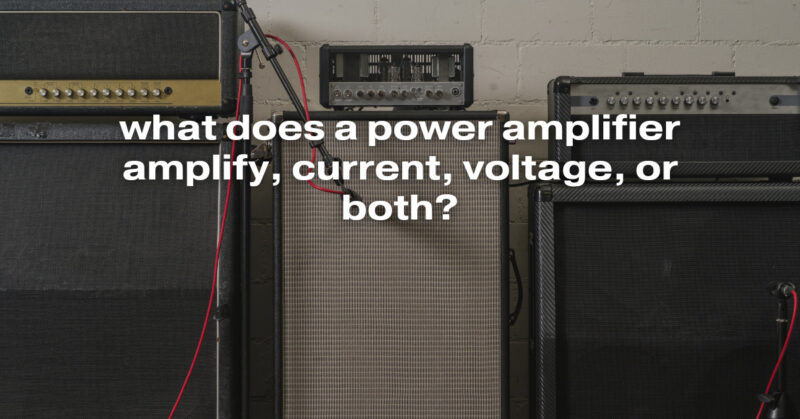A power amplifier amplifies voltage. Its primary function is to take an input signal, typically a low-level voltage signal, and increase the amplitude (voltage) of that signal to a level that can drive a load, such as speakers or headphones, with sufficient power. This amplified voltage signal is what powers the transducers (speakers or headphones) and generates sound waves.
Power amplifiers are designed to provide the necessary voltage and current to drive speakers efficiently, delivering the required power to produce audible sound. The amplification process focuses on increasing the voltage of the input signal to match the impedance of the load (usually 4-8 ohms for speakers), ensuring that the speakers receive enough power to reproduce the audio accurately and with the desired volume.
While power amplifiers primarily amplify voltage, they also provide the necessary current to deliver power to the load. The relationship between voltage, current, and power is described by the equation P = VI, where P is power, V is voltage, and I is current. By amplifying voltage, the power amplifier indirectly amplifies current, as the increase in voltage leads to a corresponding increase in current when driving a load with a fixed impedance.
In summary, a power amplifier’s main function is to amplify voltage to drive speakers or other transducers effectively, while the accompanying increase in current ensures that the transducers receive the required power to produce sound at the desired volume.


